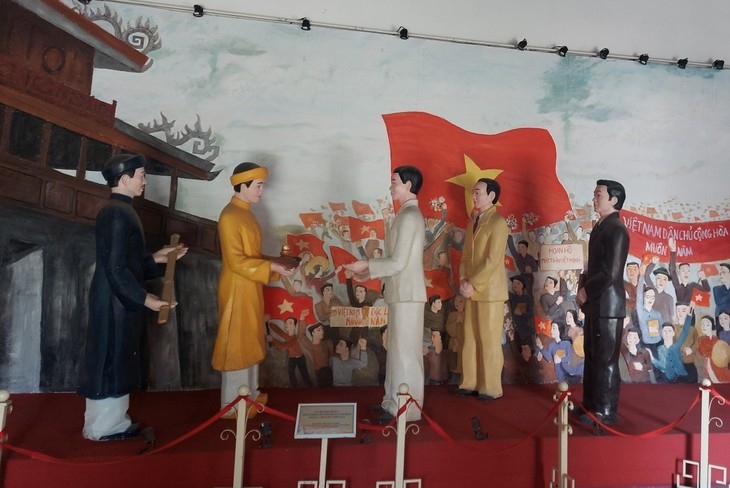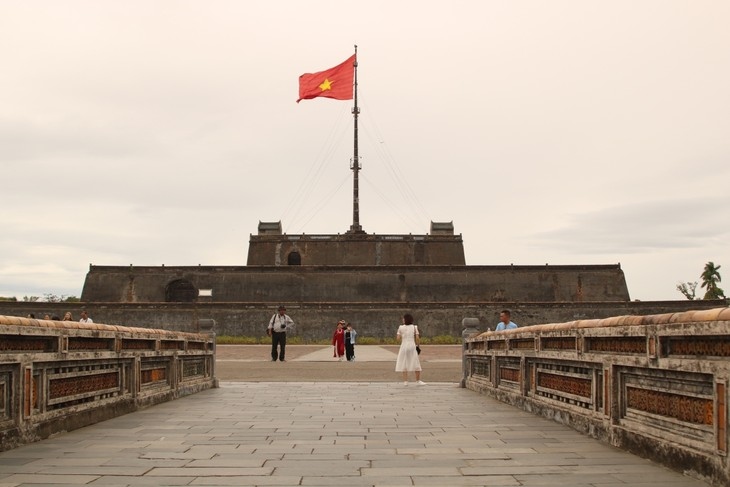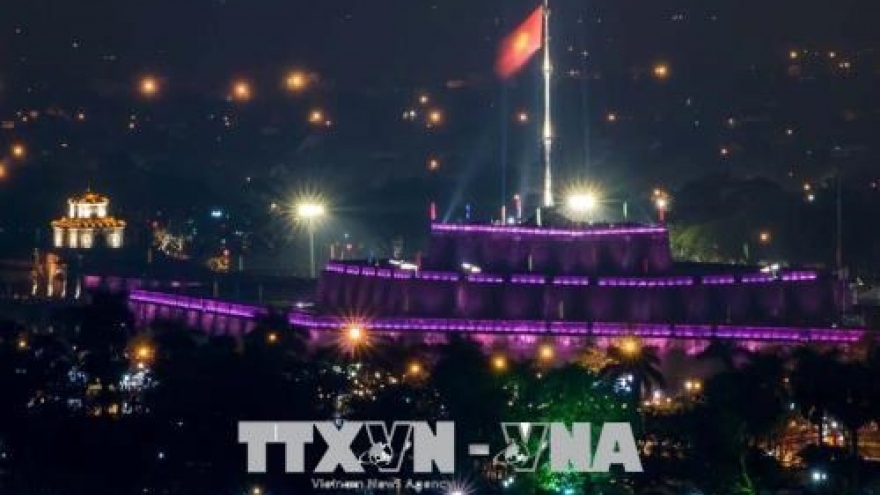Flag tower, the historical witness of the 1945 August Revolution in Hue
VOV.VN - At 9 a.m on August 21, 1945, for the first time, a red flag with a yellow star in the center flew above the top of the flag tower in front of the Ngo Mon (Noon Gate) of Hue Imperial Citadel, replacing the Nguyen Dynasty flag.

The move signaled the success of the August Revolution in the central city. Two days after the historic flag hoisting, the August Revolution broke out and succeeded in Hue. On August 30, at the Noon Gate, Emperor Bao Dai announced his abdication and handed over his sword and seal, which symbolized the power of the dynasty, to the revolutionary government led by Tran Huy Lieu.
Assoc. Professor, Dr. Do Bang, Vice President of the Vietnam Association of Historical Sciences, said that handing over the sword and seal was an international legal action.
“When Emperor Bao Dai handed over the sword and seal in Hue on August 30, 1945, Vietnam had full legal basis to declare independence on September 2, 1945. Without the abdication by Emperor Bao Dai on August 30, Vietnam wouldn’t be internationally recognized,” Mr. Bang explained.
Emperor Bao Dai’s abdication ceremony marked the end of the last feudal dynasty in Vietnamese history. In his abdication, Emperor Bao Dai wrote "During twenty years' reign, we have known much bitterness. Henceforth, we shall be happy to be a free citizen in an independent country."
According to researcher Nguyen Van Hoa, following his abdication, Emperor Bao Dai became ‘citizen Vinh Thuy’ and was invited by President Ho Chi Minh to be an advisor to the provisional government of the Democratic Republic of Vietnam in Hanoi.
“The move had a great influence on members of the Nguyen Royal family. In fact, after the August Revolution, many people in the Nguyen Dynasty believed in President Ho Chi Minh, followed the revolution, and devoted themselves to the nation,” said Mr. Hoa.

Hue flag tower, also known as Hue Imperial Citadel flagpole, was built together with other works inside the Citadel in 1807 under Gia Long Emperor.
It consists of two main parts - a flag tower and a flagpole. The flag tower consists of 3 layers of truncated tops stacked one on top of the other representing “Heaven - Earth - Human Being”. The total three-floor height is about 17.5m. The flagpole is 37 meters high.
The flag tower is located at the center of Hue City and symbolizes the ancient capital area. The flag tower and the Noon Gate are now tourist attractions in Hue.
Nguyen Thi Thanh Nhan, a tourist from Thai Binh province, said, “When visiting Hue Imperial City, we’ve learned much about this relic. Road 23/8, the flag tower Hue, the Noon Gate, and many other relics in Hue are associated with the historic abdication of the last emperor of the Nguyen Dynasty.”
The Thua Thien-Hue Museum of History possesses about 600 historical documents, images and artifacts relating to the August Revolution in the province.
Nguyen Duc Loc, the museum’s Director, told VOV that on the occasion of the August Revolution each year, the museum always attaches greater importance to communication at the grassroots.
“In addition, we’ll promote the application of IT to serve the communications activities. Questions, images and documents for dissemination are put on the museum's website, Facebook page and other social media channels,” Loc noted.
Over the past nearly 8 decades, the red, yellow-star flag fluttering on top of the Hue flag tower has been a sacred symbol closely associated with the struggle for national independence, renewal, and development.

